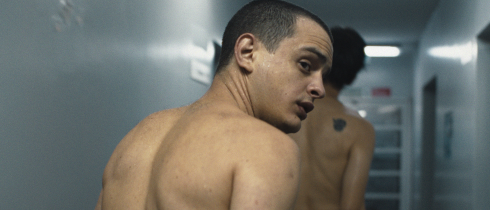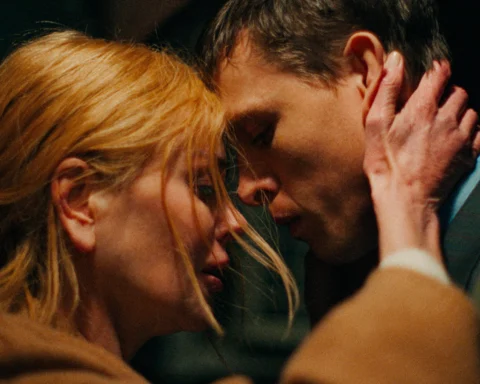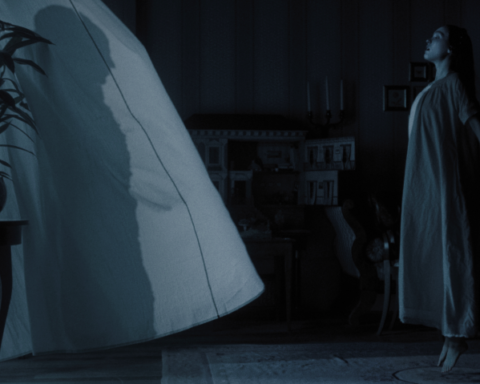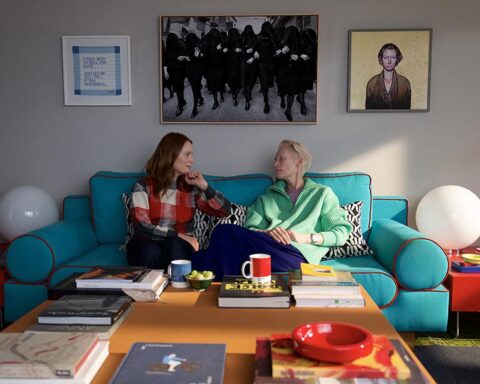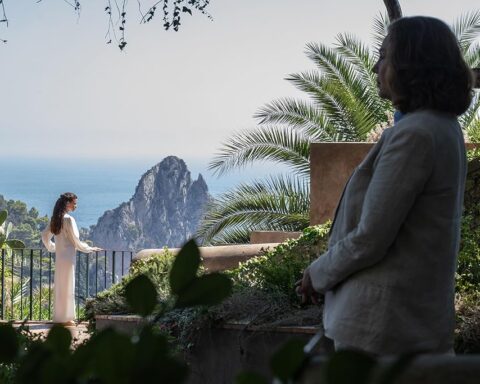Simón de la Montaña (2024)
Federico Luis’ debut feature film, “Simon de la montaña,” which premiered at Cannes, tells the story of Simon, whose world spirals out of control after his father’s death, leading to a crisis of identity and belonging. In response, he creates a new character for himself to give his life a new direction.
The film begins with a challenging opening scene: during a storm in a mountainous area, a group of disabled people cling to a column with a statue of Jesus/Simon. The howling wind is deafening, visibility is almost zero, and there is no one around to help. Simon climbs the column to check for a phone signal. (Note: This scene directly references Buñuel’s 1965 medium-length film “Simon del Desierto,” not just in title but also through this scene, or *Simeon Stylites, a Christian ascetic who lived on a small platform on top of a column near Aleppo (modern Syria) for 37 years.) Suddenly, the noise cuts out, and we hear Simon answering questions to be accepted into a group of disabled individuals. As we later understand, Simon, struggling to adapt to a new life with his mother and her new lover, desires to join the group of disabled individuals, believing he would be freer and happier. To achieve this, he begins to act as if he is disabled.
Why does Simon feel a sense of belonging with people who have mental and physical disabilities instead of his own family and surroundings? The film gives a few ambiguous hints about this: the theater where the disabled perform Romeo and Juliet likely reminds Simon of the time he spent with his father. In several flashbacks, we see his father reading this book to him (indicating he spent more time with his father than his mother), and Simon knows the lines by heart. It seems that with his father’s disappearance (death?), Simon cannot accept his mother’s lover taking his father’s place and thus rejects this new life without his father. It could be said that his psychological state traps him in moments spent with his father, leading to regression. Simon, refusing to grow up and trapping himself in childhood, identifies with the adult disabled individuals who “remain childlike or have the freedom to live a child’s life.” Of course, this is just an assumption based on clues from the film; the director might have a different perspective.
*A small detail shot – Simon borrows a hearing aid from his friend and puts it on without any hearing problems, reflecting his desire to integrate with them. Although this new experience sometimes causes him pain, it never seems unbearable; on the contrary, a small game he plays with it on the bus shows how much he embraces it. (By the way, Simon in Hebrew means to listen, to hear, which adds a nice context, even if the connection is not certain.)
The director’s technical choices make the audience feel very close to the characters; the handheld camera follows Simon, directly reflecting his excitement, sadness, and tension. The camera work is generally POV/subjective; the audience is in the same position as Simon. For example, close-ups are used in scenes with his friends, while scenes with his family are framed from a distance in general shots, often with distant and dynamic angles. The film’s dominant feeling is sincerity, often reinforced through natural acting and communication between characters. The director avoids a reductive approach by showing disabled individuals as just good and deficient/helpless, instead displaying all their aspects, including their small cunning games exploiting the rules and moral dilemmas. The film’s soundscape is also highly effective, successfully reflecting the environment and situations; for instance, the storm scene, the argument between Simon and his family (the deafening noise from the above-mentioned hearing aid), or the serene soundscape when Simon is calm.
After a challenging prologue, the film starts with a scene where a psychologist at the camp asks Simon questions to diagnose his mental disability and issue a disability certificate. The ending mirrors this scene, with an official asking Simon the same questions in an office. Simon continues his life as he prefers.
Despite its strong technical aspects, the film falls short in exploring the psychological depth or motivation of its main character and has narrative inconsistencies. It also struggles between sincere acting that reflects the characters’ struggles and an exaggerated forced portrayal of disability, which weakens the film. Nevertheless, “Simon de la montaña” leaves an impressive mark as a promising start for the director. Winning the Critics’ Week Grand Prize and being nominated for the Golden Camera reinforces this.
Simon de la montaña” premiered at Cannes – La Semaine de la Critique.
Nil Birinci

